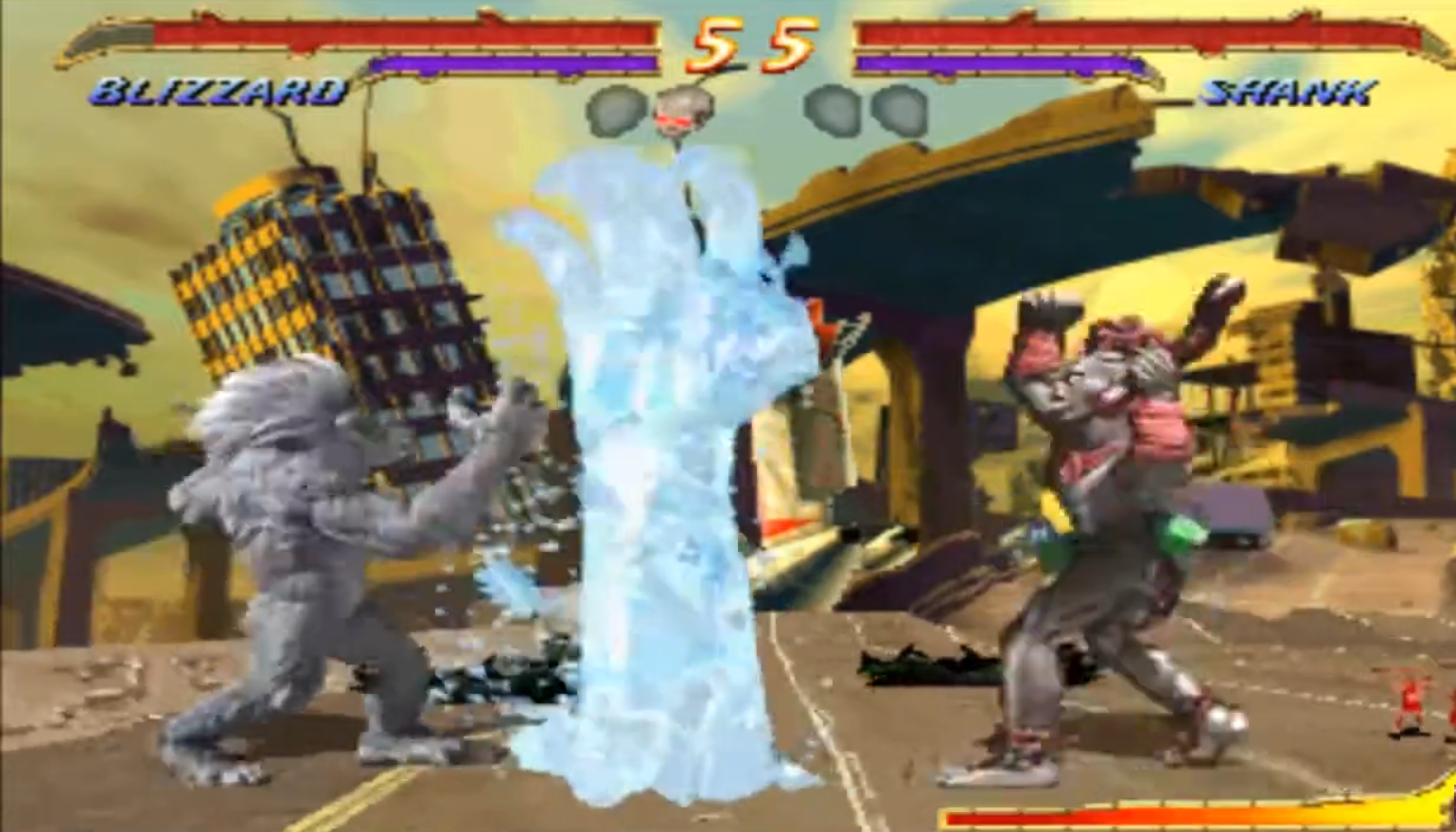Primal Rage Transported Monsters Into Arcades
The monster fighting game stood out in a crowded genre

Street Fighter II unlocked a fighting game craze in the early 1990s. Various developers soon took part in a gold rush. Fatal Fury, Mortal Kombat, and Virtua Fighter were some of the earliest big competitors for players. Atari Games introduced a new challenger for the crown with Primal Rage, in 1994. It left such a deep impression that decades could not dampen the fire of its fans.
Meteor strikes of ideas
Dinosaurs were big in the last decade of the 20th century. Seeing this, Atari thought about how to incorporate this into a game that could compete with Street Fighter. Jason Leong, a young artist at the company, took this in a new direction when he combined dinosaurs, other animals, and mythical creatures to create a new roster of fighters. Jason Leong explained the process in a 1995 GamePro interview:
A few years ago I brought up the concept of a head-to-head dinosaur fighting game, which coincidentally someone else also brought up, but their idea was just two T. rexes fighting. My original write-up included ideas that finally appeared in the game, such as different species of quickly moving dinosaurs and the concept of the dinosaurs being gods.
The development team faced the challenge of how to translate this idea into a game. Jason Leong and Dennis Harper, a programmer, turned to stop-motion to give it a distinctive look. The concept art became real-life models through the work of Dan Platt, an anatomical modeler. Each figure had a metal skeleton that allowed its limbs to change position.
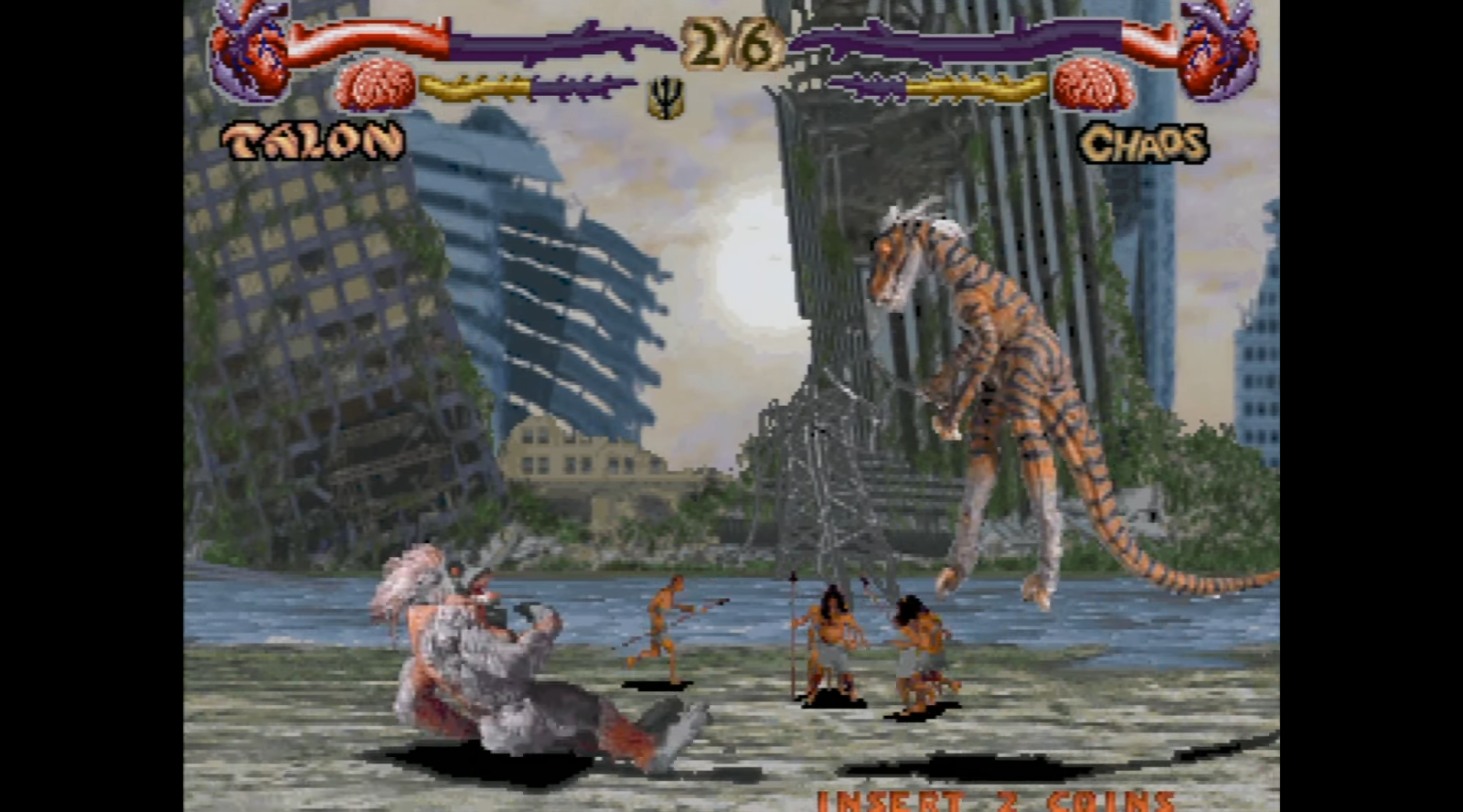
After they had the models, they shot different poses. Pete Kleinow, a visual effects expert who had worked on The Terminator and RoboCop 2, supervised the team that captured the frames. In the arcade version, each Primal Rage had close to 1000 frames of animation, so this was quite a laborious project. All in all, the development process took over 2 years to bring the game to market.
A fight pushes a story
Primal Rage made a big splash at 1994’s CES in Chicago. One reason for the stir was the fluidity of the characters' movements. Also, the playable characters were gods that resembled dinosaurs and apes, giving the game quite a distinctive look!
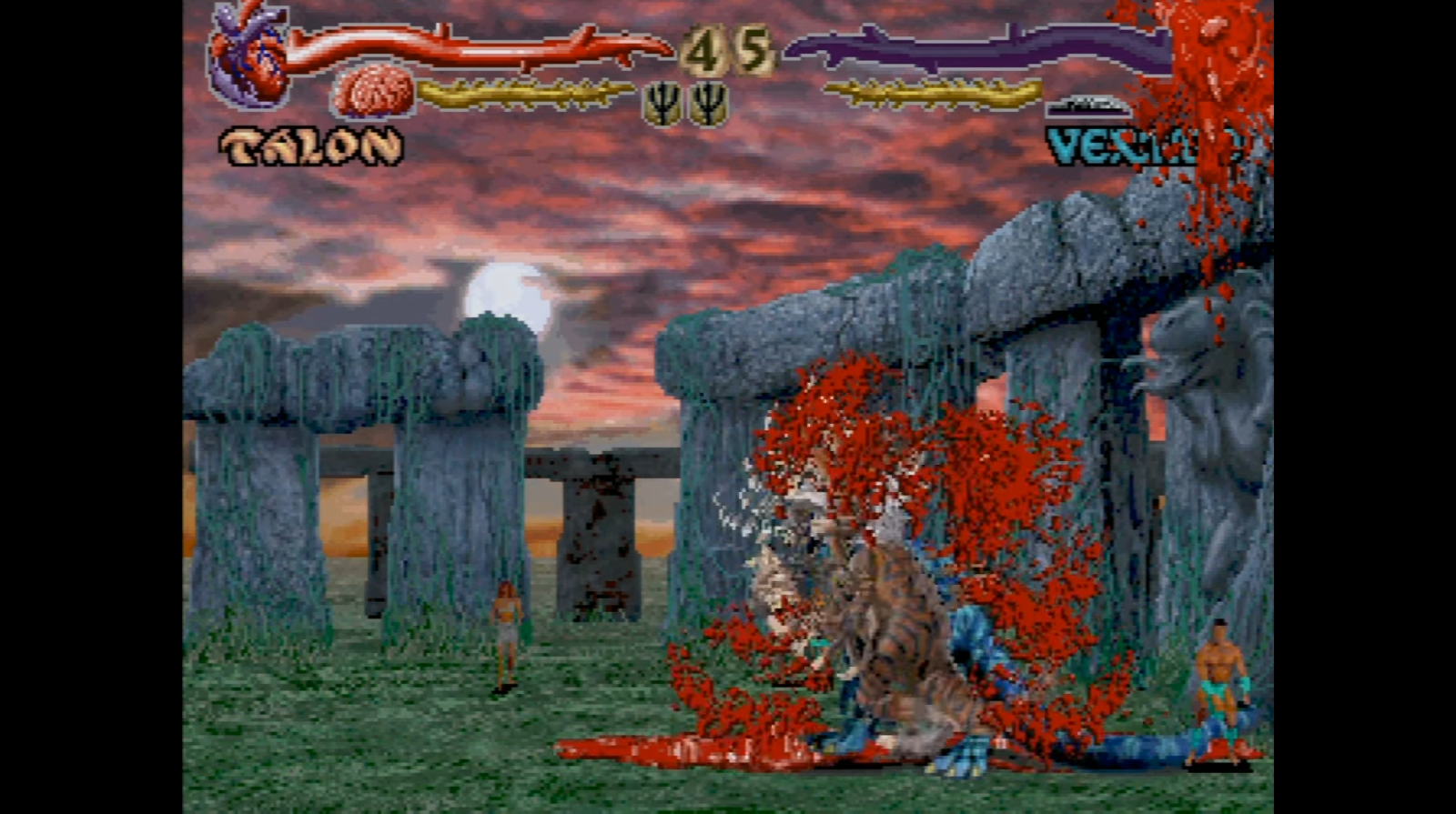
The game is also violent, in the vein(pun intended) of Mortal Kombat. Blood squirts from wounds, there are brutal finishers, and the worlds are grim places. The health bar is an artery and a heart. Players can even eat human worshippers to fill that grisly health bar. All these factors also meant that it created controversy.
Gameplay is frenetic; unlike many games of the time there aren’t many combos, but the pace requires quick reactions. Players need to watch out for tails, claws, horns, and teeth instead of just feet and fists, creating an interesting dynamic in matches.
Primal Rage is a game that tapped into many popular influences of the day. Its popularity turned it into one of 1994’s most popular arcade cabinets. As usual, the success kick-started efforts to port the game to home consoles.
Invasions of homes
Developers had to change the experience of Primal Rage to fit the capabilities of then-contemporary consoles. Time Warner Interactive reduced the number of frames of animation — for example, the Sega Genesis version had around 20% of the arcade games’ frames so that it could fit on the cart.
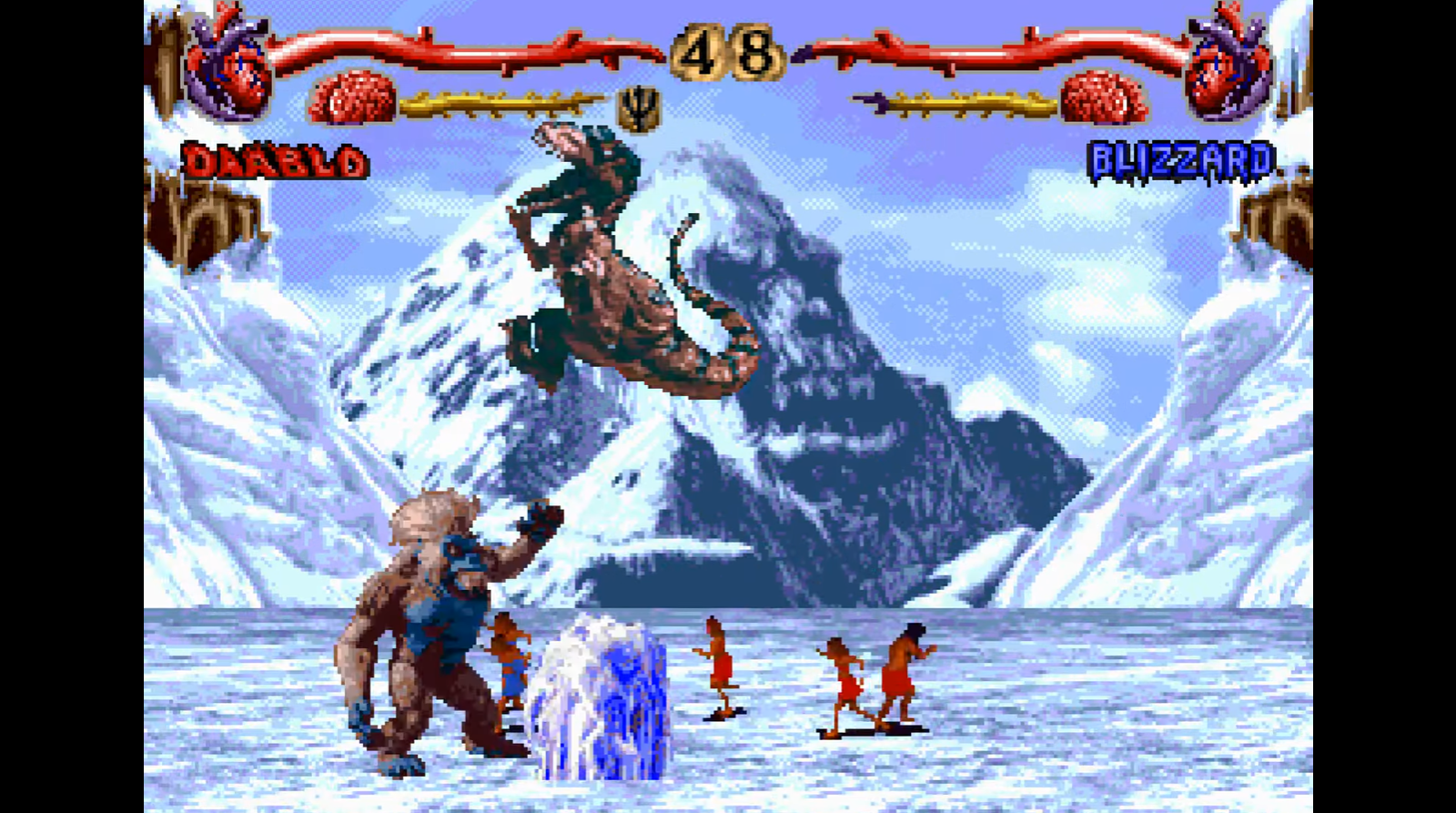
Despite the technical challenges, Primal Rage appeared on over half a dozen platforms: the 3DO, Atari Jaguar, SNES, Sega Genesis, the original PlayStation, Sega Game Gear, and more. Many regarded the Sega Saturn port as the one that was the closest copy of the arcade experience.
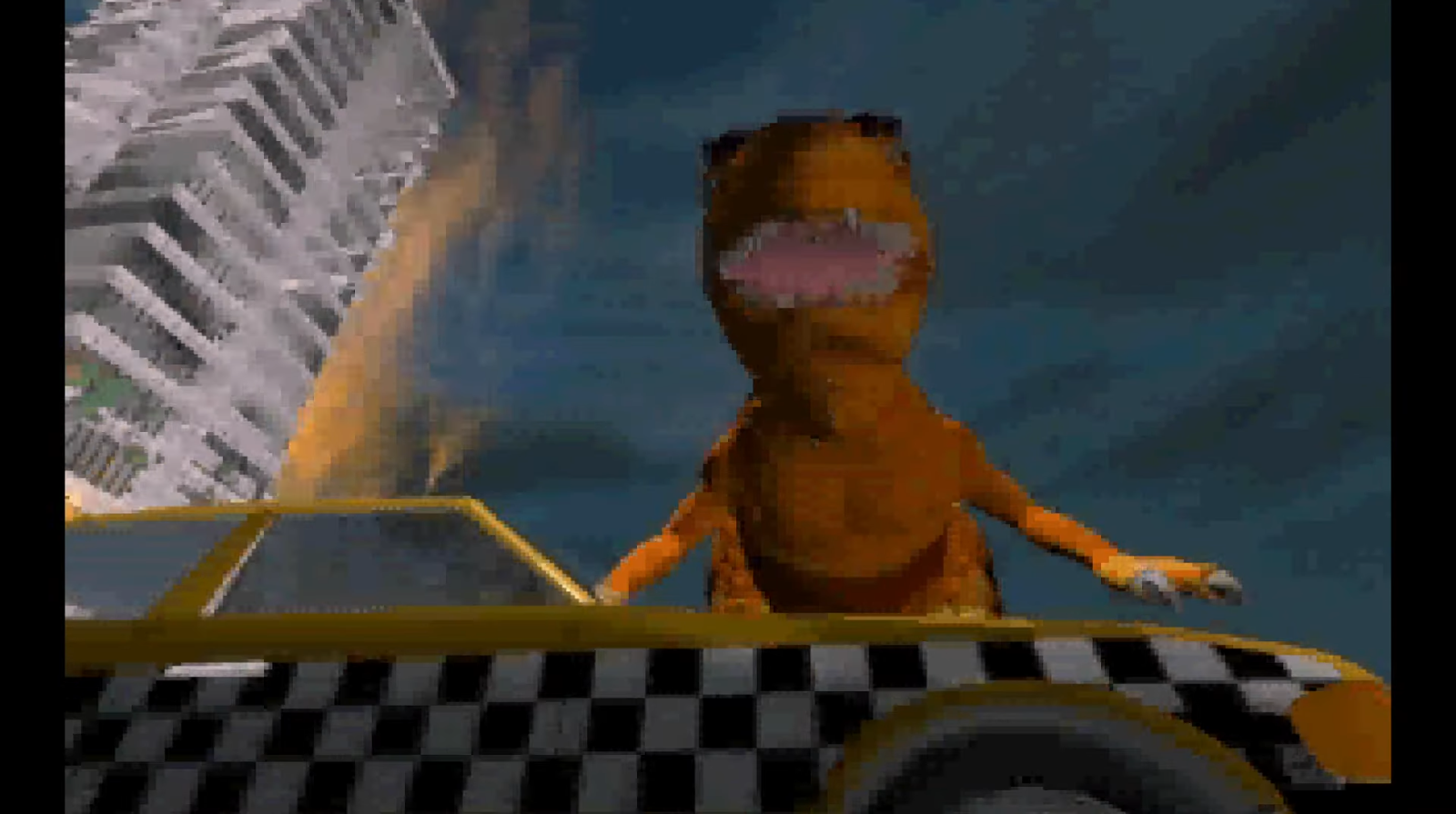
In February 1996, Primal Rage action figures debuted at the Toy Fair in New York. The company responsible for the toy line, Playmates, had also created Earthworm Jim figurines. In addition, Sirius Entertainment launched a Primal Rage comic book later that year.
Chapters that vanish
The momentum was there for a sequel. Jason Leong, along with a team at Atari, had been working on Primal Rage II. Because of the franchise’s success, they faced the pressure to outdo themselves, so they had to increase the frames of animation per character. Developers struggled to meet the ambitious deadlines.
In 1996, Atari Games was purchased by Midway. Now Mortal Kombat and Primal Rage were neighbors. Perhaps to avoid cannibalizing its own market share, Midway chose not to revive the Primal Rage II project, even though it was already deep into development. Arcade gaming’s popularity had also suffered a downturn because of the release of the more powerful 5th generation of consoles.
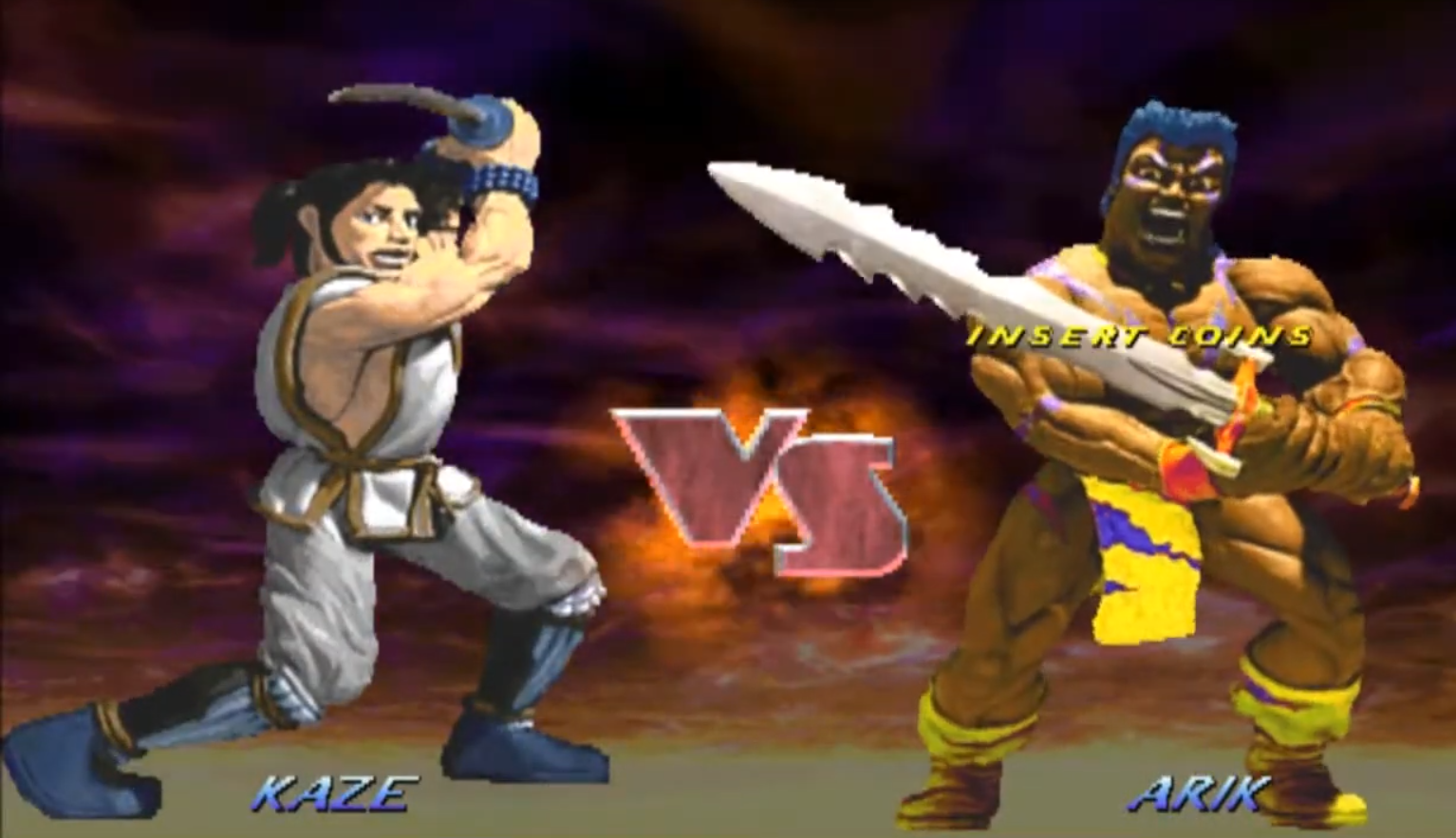
Many thought they never would play Primal Rage II. A couple of events rekindled that hope, though. In 2014, people discovered a Primal Rage II test machine at Galloping Ghost Arcade in Brookfield, Illinois. Game footage spread on the internet. It became apparent that this time around, the fighters were humanoid and they could transform into monsters during a match.
GruntZilla94 created an emulator that could run the Primal Rage II files in 2017. Players could at last experience the game decades after its cancellation. It’s a sign of the franchise's impact that, even though it had only one official title, people treasured their memories of it for so many years. Not only did the beasts conquer Urth, but they also conquered the hearts of many gamers.
